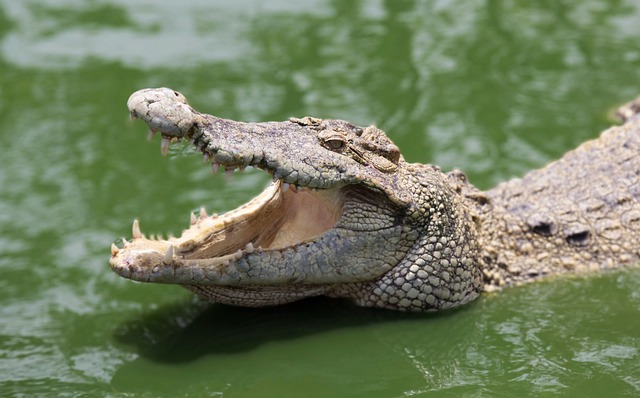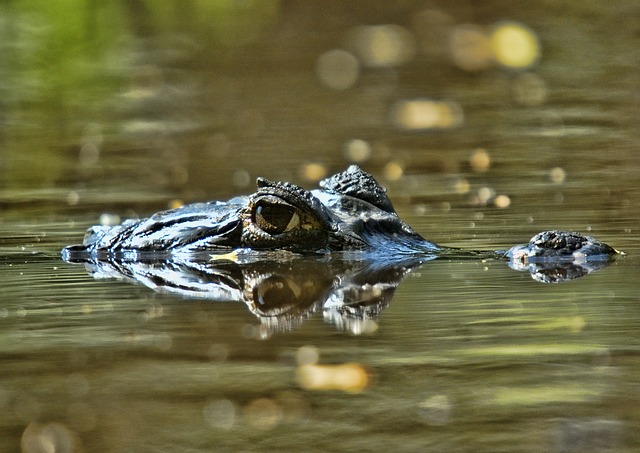WILDLIFE
MAR 19, 2022
20 Essential Facts Of Crocodile

These are the 20 essential facts of crocodile that you might not know but important for your safety and knowledge of the beast.
1. The ancestor of crocodiles first appeared in the Late Cretaceous period, about 80 to 73 million years ago and was known as Deinosuchus.
2. Crocodiles are the biggest reptiles on Earth. Crocodiles existed before dinosaurs. Although not as big as the T-Rex, the crocodile lasted much longer. Saltwater crocodiles (Crocodylus porosus) are the largest aquatic reptiles on Earth.
3. This prehistoric animal could grow to more than 7 meters and weigh up to half a ton. Saltwater crocodile populations are scattered in salty and brackish waters in several parts of Asia, Australia and India.
4. There are two main reasons why crocodiles didn’t go extinct like the dinosaurs. First, crocodiles can live very long without food. Second, they live where they are least affected when an asteroid hits Earth.
5. Crocodiles are amphibians or animals that can live in two realms. They have two respiratory organs, namely skin to breathe on land and gills to breathe in water.
6. About 70% of crocodiles will choose the same partner when the breeding season arrives although crocodiles may find new partners. Even these animals will mate once as a form of loyalty.
7. When they are sunbathing or lying in the sun, the body temperature will rise and to lower it, the crocodile will open its mouth wide.
8. Crocodiles are carnivores and eat everything, such as small mammals, birds, fish, insects, frogs, other reptile species and crustaceans.
9. The study also revealed that animals including crocodiles secrete tears to maintain stable vision. With its constituent composition, their eyesight will be maintained.
10. Crocodile swallows stones to help digest food because crocodiles always eat their prey whole or swallowed whole. These stones are known as ‘gastrolites’ when they settle and persist for years in the stomachs of reptiles or crocodiles.

11. Crocodiles attack their prey by pouncing and biting their prey, then pulling it strongly and suddenly into the water. The muscles around its jaw are so well developed that it can close very strongly.
12. The crocodile bite has a force of 3,700 pounds per square inch (psi) or 16,460 newtons, says the National Geographic page. So strong, crocodiles can drag and tear our bodies easily.
13. The most dangerous crocodile in the world was the Nile crocodile (Crocodylus niloticus). Nile crocodiles live in parts of Madagascar and most of Africa, except for the Sahara. This crocodile, which is often found in freshwater or brackish water lakes and rivers, has a body size that can reach 5-6 meters.
14. Both crocodiles and alligators are very dangerous. But clearly crocodiles are more dangerous because crocodiles are superior to bite strength and body size is larger than alligators. In addition, crocodiles are more aggressive, can attack even though they are not disturbed.
15. Technically, a crocodile will not die of old age. Instead of aging, they grow physically as they age. Although they can’t die from aging, nature has a way to kill them. Crocodiles mostly die of starvation or disease.
16. Just like other reptiles, such as lizards and snakes, actually crocodiles also have a tongue. However, unlike other reptiles, crocodiles have tongues that are bound and held in place by a membrane in their mouth.
17. The difference between a crocodile and an alligator is that crocodiles have a pointed V-shaped snout, while alligators’ snouts are wider at the bottom because they are U-shaped. If they show their teeth, they will show their upper and lower teeth in a jagged formation. Meanwhile, if an alligator shows its teeth, only its upper teeth can be seen.
18. American alligators are very abundant in Florida because of successful conservation programs. There are more than one million alligator populations spread across 67 districts.
19. Crocodile comes from the Greek, krokodilos, from the words kroko, which means ‘pebbles’, and deilos which means ‘worms’ or ‘people’. They call it ‘rock worms’ because they observe the habit of crocodiles basking on rocky riverbanks.
20. As a reptile animal, the way crocodiles reproduce is by laying eggs (oviparous). Breeding is preceded by the mating process between the female parent and the male parent.
related post